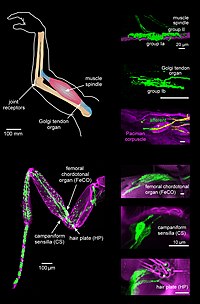
Photo from wikipedia
Rationale There are growing concerns over the occurrence of adverse physiologic events (PEs) occurring in pilots during operation of United States Air Force and Navy high-performance aircraft. We hypothesize that… Click to show full abstract
Rationale There are growing concerns over the occurrence of adverse physiologic events (PEs) occurring in pilots during operation of United States Air Force and Navy high-performance aircraft. We hypothesize that a heightened inspiratory work of breathing experienced by jet pilots by virtue of the on-board life support system may constitute a “distraction stimulus” consequent to an increased sensation of respiratory muscle effort. As such, the purpose of this study was to determine whether increasing inspiratory muscle effort adversely impacts on attentional performance. Methods Twelve, healthy participants (age: 29 ± 6 years) were recruited for this study. Participants completed six repetitions of a modified Masked Conjunctive Continuous Performance Task (MCCPT) protocol while breathing against four different inspiratory threshold loads to assess median reaction times (RTs). A computer-controlled threshold loading device was used to set the inspiratory threshold loads. Repeated measures analysis of variances (ANOVAs) were performed to examine: (i) the efficacy of the threshold loading device to impose significantly higher loading at each loading condition; (ii) the effects of loading condition on respiratory muscle effort sensation; and (iii) the influence of hypercapnia on MCCPT scores during inspiratory threshold loading. Generalized additive mixed effects models (GAMMs) were used to examine the potential non-linear effects of respiratory muscular effort sensation, device loading, and hypercapnia, on MCCPT scores during inspiratory threshold loading. Results Inspiratory threshold loading significantly augmented (P < 0.05) inspiratory effort sensation and the inspiratory pressure-time product (PTP). Our analyses also revealed that median hit RT was positively associated with inspiratory effort sensation during inspiratory loading trials. Conclusion The findings of this work suggest that it was not increasing inspiratory muscle effort (i.e., PTP) per se, but rather participant’s subjective perception of inspiratory “load” that impacts negatively on attentional performance; i.e., as the degree of inspiratory effort sensation increased, sotoo did median hit RT. As such, it is reasonable to suggest that minimizing inspiratory effort sensation (independent of the mechanical output of the inspiratory muscles) during high-performance flight operations may prove useful in reducing pilot RTs during complex behavioral tasks.
Journal Title: Frontiers in Psychology
Year Published: 2022
Link to full text (if available)
Share on Social Media: Sign Up to like & get
recommendations!